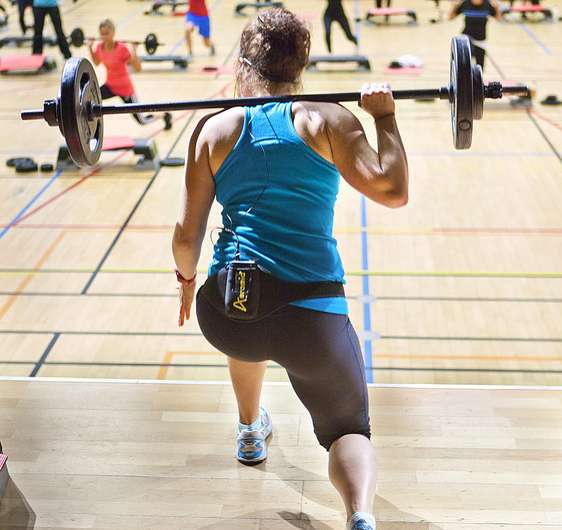Training during first half of menstrual cycle most efficient

Research at Umeå University provides new insights into when during the menstrual cycle it is advantageous to periodise your strength training. The results show that training that is concentrated to the first two week of the cycle have more of an effect on muscular strength, power and muscle mass. The study is a part of a dissertation that also shows that periodic training could be implemented without any female specific exercise-related complications and was perceived positively by participants.
"How the menstrual cycle can affect training is in general an unexplored research area," says Lisbeth Wikström-Frisén, who is a doctoral student at the Department of Community Medicine and Rehabilitation and author of the dissertation.
"As most sports-related research has been performed on male participants, there are on the whole not much scientific knowledge of how women can optimise their training based upon the hormone cycle."
Lisbeth Wikström-Frisén's objective with the study on training, where 59 women participated in a four-month leg resistance training programme, was to increase knowledge on how women can train based upon their menstrual cycle and hence get better effects from the training without increasing the number of training sessions. The results show that the group who underwent high frequency leg resistance training (five times per week) for the first two weeks of each cycle, saw a larger effect than the group who underwent the same training programme for the latter two weeks of the menstrual cycle. A comparison in effect between women taking birth control pills and those who did not take any hormone-based birth control showed no noticeable differences.
Periodised resistance training could have positive effects and may contribute to reducing the development of female-specific health risks that excessive training can cause. It is also necessary to find out how women respond to training to further increase athletic performance in competitive sports.
"Since menstruation is a central part in everyday life for women and their training, we need to become better at taking this into account when optimising training," says Lisbeth Wikström-Frisén.
Stress hormone cortisol an uncertain marker of overtraining
Together with her research colleagues at the Unit of Sports Medicine, Lisbeth Wikström-Frisén has as part of her dissertation also studied cortisol levels in 33 participants for a nine month period. The results showed that levels of the stress hormone varied depending on season, but that women who took birth control pills generally showed higher levels.
"The varying levels of cortisol are of importance when optimising training for women. If we measure cortisol levels of women who are on the pill and find increased values, it could easily be interpreted as if they are overtrained, but that's not necessarily the case according to our research results," says Lisbeth Wikström-Frisén.
More information: umu.diva-portal.org/smash/record.jsf?pid=diva2%3A955835&dswid=7188
















